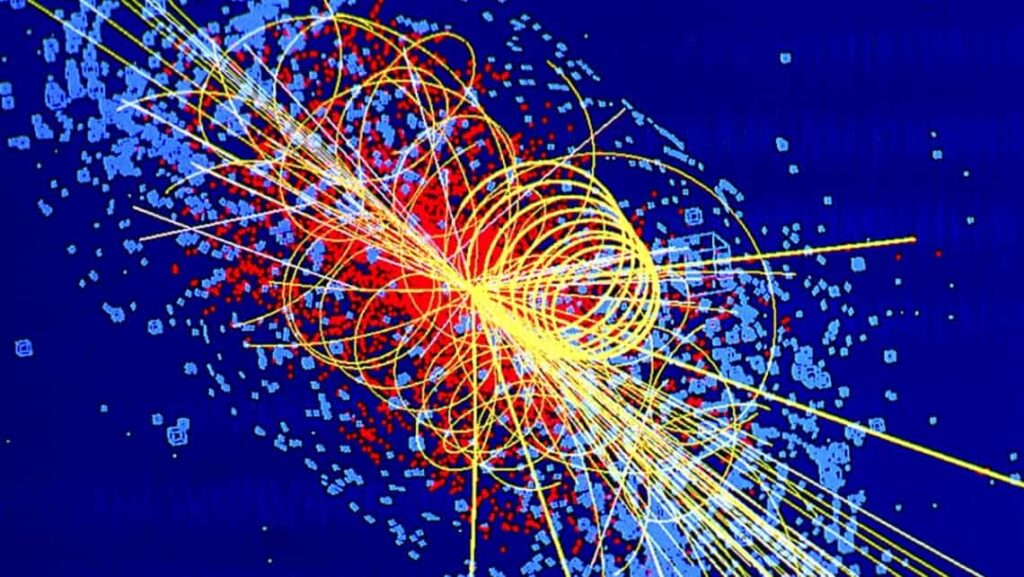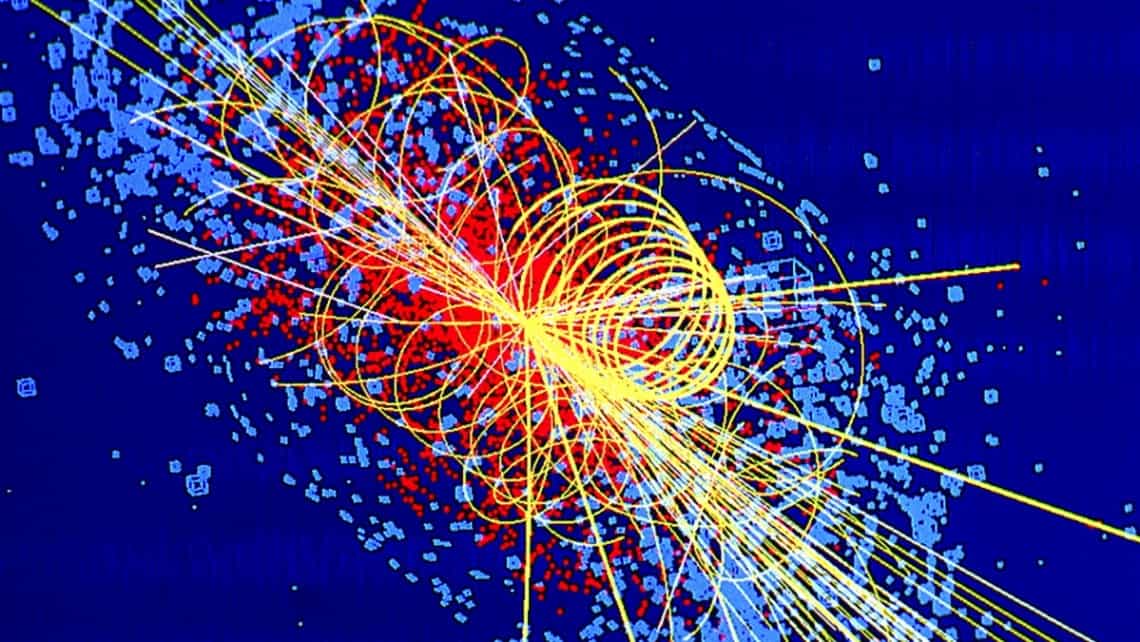What is a Boson, Types, Structures, and FAQs?
A boson is a type of elementary particle that follows Bose-Einstein statistics. It is characterized by having integer spin, such as 0, 1, 2, and so on, in units of the reduced Planck constant (h-bar). Bosons are one of two fundamental classes of particles, the other being fermions.
What is a Boson?
A boson is a type of elementary particle that follows Bose-Einstein statistics. It is characterized by having integer spin, such as 0, 1, 2, and so on, in units of the reduced Planck constant (h-bar). Bosons are one of two fundamental classes of particles, the other being fermions.
Bosons can exist as force-carrying particles or matter particles. Force-carrying bosons, also known as gauge bosons, mediate the fundamental forces of nature. Examples of force-carrying bosons include the photon (mediates the electromagnetic force), gluon (mediates the strong nuclear force), W and Z bosons (mediate the weak nuclear force), and the hypothetical graviton (postulated to mediate the gravitational force).
Matter bosons, also called scalar bosons, are particles that can exist in excited energy states and participate in particle interactions. Examples include the Higgs boson, which interacts with other particles to give them mass, and mesons, which are composed of a quark and an antiquark.
Bosons behave differently from fermions due to the Pauli Exclusion Principle. While fermions follow the Pauli Exclusion Principle, which states that no two identical fermions can occupy the same quantum state, bosons do not have such restrictions. Multiple bosons can occupy the same quantum state, leading to phenomena like Bose-Einstein condensation, where a large number of bosons occupy the lowest energy state.
Bosons play a fundamental role in particle physics, quantum mechanics, and the understanding of the fundamental forces and particles that make up the universe.
Why boson is named as such?
Bosons are named after the Indian physicist Satyendra Nath Bose. The term “boson” was introduced by Paul Dirac, another renowned physicist, as a tribute to Bose’s pioneering work in the field of quantum statistics.
In the 1920s, Satyendra Nath Bose collaborated with Albert Einstein to develop a statistical framework that described the behavior of particles with integer spin, such as photons. Their work laid the foundation for what is now known as Bose-Einstein statistics, which applies to particles that can occupy the same quantum state.
To recognize Bose’s contribution to the development of this statistical framework, Dirac named the class of particles that obey Bose-Einstein statistics “bosons” in his honor. The name “boson” serves as a lasting tribute to Satyendra Nath Bose and his significant contributions to the field of quantum mechanics and statistical physics.
Types of bosons.
There are several types of bosons in particle physics. Here are some of the most well-known types:
1. Photon: The photon is the mediator of the electromagnetic force. It has zero mass and carries energy and momentum associated with electromagnetic interactions. Photons are responsible for carrying and transmitting light.
2. Gluon: Gluons are the mediators of the strong nuclear force, also known as the strong interaction or color force. They bind quarks together to form protons, neutrons, and other particles composed of quarks. Gluons themselves carry color charge and can interact with other gluons.
3. W and Z Bosons: As mentioned earlier, the W and Z bosons mediate the weak nuclear force. The W bosons come in two charged forms (W+ and W-) while the Z boson is electrically neutral(Z0). They are responsible for processes such as beta decay and interactions involved in weak interactions.
4. Higgs Boson: The Higgs boson is associated with the Higgs field, which is thought to give mass to other particles. Its discovery was announced at CERN in 2012. The Higgs boson is electrically neutral and has a mass of about 125 times that of a proton.

5. Graviton (Theoretical): The graviton is a hypothetical particle that is postulated to mediate the gravitational force. It has not been observed or discovered yet, but it is part of some theories attempting to reconcile quantum mechanics with general relativity.
Why it is called W and Z Boson?
The W and Z bosons were named based on their electric charge properties and the order in which they were discovered.
The W bosons were named as such because they carry a positive (W+) or negative (W-) electric charge. The “W” stands for “weak” since these bosons mediate the weak nuclear force. The discovery of the W bosons was announced in 1983 by the UA1 and UA2 experiments at CERN.
The Z boson was named to follow the same convention. It is electrically neutral, meaning it carries no electric charge. The “Z” was chosen simply as the next letter in the alphabet after “W”. The discovery of the Z boson was also announced in 1983 by the UA1 and UA2 experiments at CERN, in parallel with the discovery of the W bosons.
Naming particles often follows a convention that reflects their properties or the order of their discovery. In the case of the W and Z bosons, their names reflect their electric charge characteristics and the fact that they are part of the weak force, one of the four fundamental forces of nature.
Structure of bosons.
Bosons are elementary particles that are point-like and do not possess any internal structure or substructure. According to current theories and experimental evidence, they are considered fundamental particles, indivisible, and not composed of smaller components.
Unlike composite particles such as protons or neutrons, which are made up of quarks and gluons, bosons are elementary in nature and cannot be broken down into simpler constituents. Bosons are classified based on their intrinsic spin, which is a fundamental property that characterizes their behavior.
The spin of a boson determines its angular momentum and its behavior under rotations in quantum mechanics. Bosons have integer values of spin, such as 0, 1, 2, and so on, in units of the reduced Planck constant (h-bar). This distinguishes them from fermions, which have half-integer values of spin.
In terms of their structure in physical space, bosons are considered point particles. This means that they are described mathematically as having a position in space but no extended size or internal structure. The probability of finding a boson at any given point in space is described by a wave function, which is a mathematical representation of the particle’s quantum state.
It’s important to note that while bosons themselves are point-like, their interactions with other particles, such as the exchange of gauge bosons or the Higgs boson, can influence and govern various physical phenomena. The behavior and properties of bosons are studied through experiments conducted in particle accelerators and other high-energy physics facilities.
FAQs of Boson.
Q1: What is a boson?
A: In particle physics, a boson is a type of elementary particle that follows Bose-Einstein statistics. It has an integer spin, such as 0, 1, 2, and so on.
Q2: What are examples of bosons?
A: Some examples of bosons include photons (particles of light), W and Z bosons (mediators of the weak nuclear force), gluons (mediators of the strong nuclear force), and the Higgs boson (associated with the Higgs field and the mechanism of mass generation).
Q3: What is the difference between bosons and fermions?
A: Bosons and fermions are two fundamental classes of particles. The key difference lies in their quantum statistics. Bosons follow Bose-Einstein statistics and can occupy the same quantum state simultaneously, leading to phenomena like Bose-Einstein condensation. On the other hand, Fermions follow Fermi-Dirac statistics and obey the Pauli exclusion principle, which states that no identical fermions can occupy the same quantum state.
Q4: What is the significance of bosons in physics?
A: Bosons play crucial roles in various fundamental interactions and phenomena in physics. For example, photons are responsible for electromagnetic interactions and the transmission of light, while W and Z bosons mediate the weak nuclear force, which governs processes like radioactive decay. The Higgs boson is associated with the Higgs field and the mechanism of mass generation.
Q5: Are all bosons force carriers?
A: All bosons are not force carriers, but many of them are. For instance, photons are the force carriers of the electromagnetic interaction, gluons mediate the strong nuclear force, and W and Z bosons mediate the weak nuclear force. However, there are also bosons like the Higgs boson that do not act as force carriers.
Q6: Can bosons be created or destroyed?
A: According to the principles of quantum field theory, bosons can be created or destroyed. They can be created through particle interactions and energy transformations, and they can also be annihilated, converting their mass or energy into other forms.
Q7: How was the Higgs boson discovered?
A: The Higgs boson was discovered in 2012 at the Large Hadron Collider (LHC) at CERN. Scientists analyzed the data from proton-proton collisions and observed signals consistent with the existence of the Higgs boson. The discovery confirmed the existence of the Higgs field and provided experimental evidence for the mechanism of mass generation.
Q8: Can bosons interact with each other?
A: Yes, bosons can interact with each other through fundamental forces. For example, photons can interact with other photons, leading to phenomena like scattering and interference. Similarly, other bosons can also interact with each other, depending on the specific forces involved.
Q9: Can bosons have different energies?
A: Yes, bosons can have different energies. The energy of a boson depends on its frequency or wavelength, which determines its individual characteristics and behavior. Different energy levels of bosons can correspond to different quantum states and can participate in various physical processes.
Q10: How are bosons related to the concept of Bose-Einstein condensation?
A: Bose-Einstein condensation is a quantum phenomenon that occurs when a large number of bosons occupy the same quantum state at low temperatures. It was first predicted by Satyendra Nath Bose and Albert Einstein in the 1920s. Bosons’ ability to occupy the same quantum state makes this condensation possible, leading to unique macroscopic quantum effects.
Conclusion.
A boson is a type of elementary particle that follows Bose-Einstein statistics. It is named after the Indian physicist Satyendra Nath Bose. The term “boson” was introduced by Paul Dirac, another renowned physicist, as a tribute to Bose’s pioneering work in the field of quantum statistics. Bosons can exist as force-carrying particles or matter particles and can interact with each other, and can have many types.




1 Comment
[…] of antiparticles extends beyond just fermions (such as electrons and protons). It also applies to bosons, like the antiphoton, which is the antiparticle of the photon, and the W⁺, W⁻, and Z⁰ bosons, […]